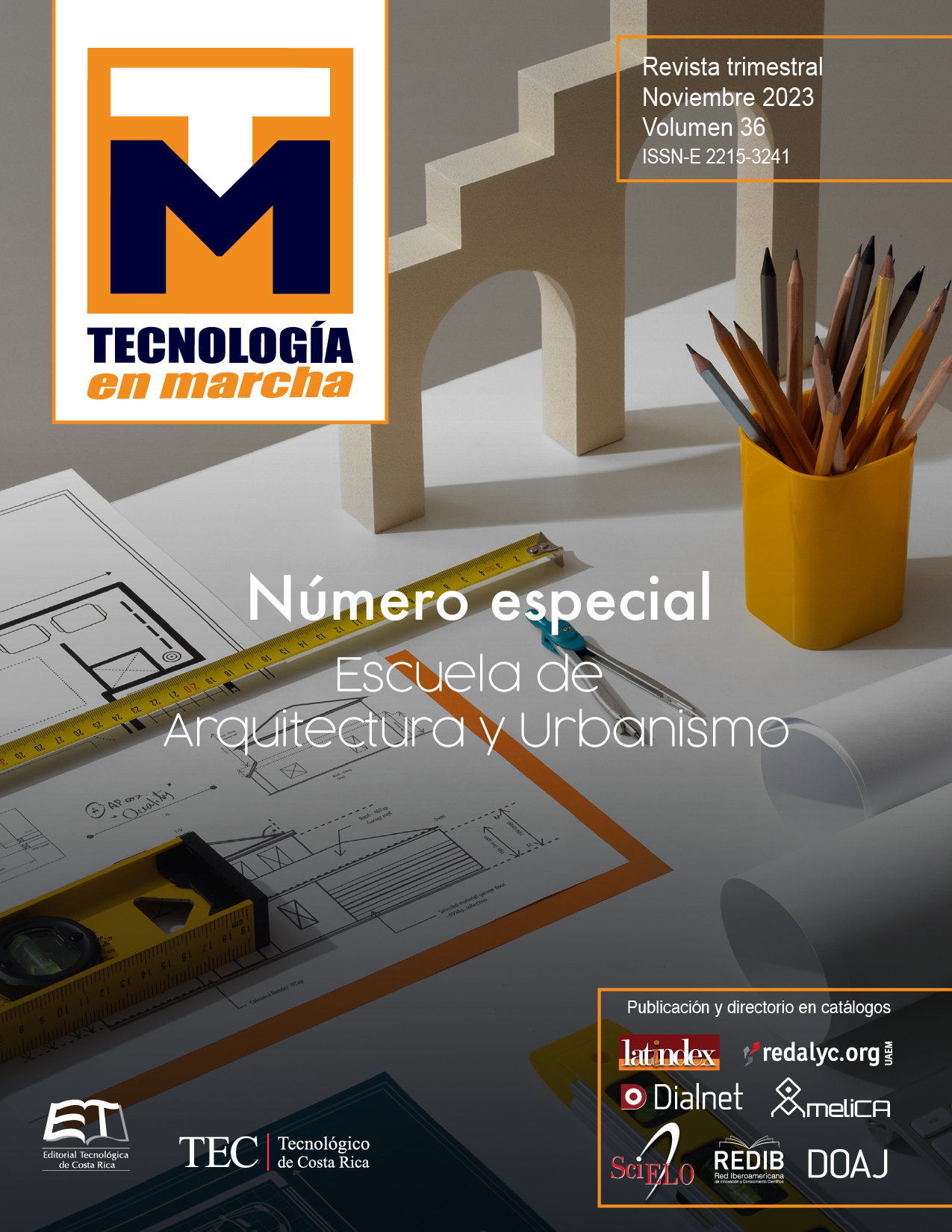Integrated lighting system for an office space in the tropics of Costa Rica
Main Article Content
Abstract
Today, thanks to advances in research and technological development, natural and artificial light is concerned with the visual well-being of man and the search for the ideal lighting conditions, which guarantee optimal development in their daily tasks. Through the descriptive methodology, it was proposed that despite the advances and continuous efforts to innovate in technology that refers to the control and redirection of natural lighting, there are still paths to explore, since in many cases, These advances have guaranteed great savings in energy consumption but not in the visual satisfaction of its users. Hypotheses were formulated in the search for the use of different control devices and redirection of sunlight inside office spaces, which allows office users to control glare, which is the main problem present in the climate tropical. This research concluded that although explorations have already been carried out on the subject, a theoretical-experimental work would represent one more contribution to the daily task of research to improve knowledge about the control of natural lighting in tropical climate countries.
Article Details

This work is licensed under a Creative Commons Attribution-NonCommercial-NoDerivatives 4.0 International License.
Los autores conservan los derechos de autor y ceden a la revista el derecho de la primera publicación y pueda editarlo, reproducirlo, distribuirlo, exhibirlo y comunicarlo en el país y en el extranjero mediante medios impresos y electrónicos. Asimismo, asumen el compromiso sobre cualquier litigio o reclamación relacionada con derechos de propiedad intelectual, exonerando de responsabilidad a la Editorial Tecnológica de Costa Rica. Además, se establece que los autores pueden realizar otros acuerdos contractuales independientes y adicionales para la distribución no exclusiva de la versión del artículo publicado en esta revista (p. ej., incluirlo en un repositorio institucional o publicarlo en un libro) siempre que indiquen claramente que el trabajo se publicó por primera vez en esta revista.
References
A, Joarder, Z. Ahmed, P. Andrew, A simulation assessment of the height of light shelves to enhance daylighting quality in tropical office buildings under overcast sky conditions in Dhaka, Bangladesh. 2009
G, Baruch.: “Climate Considerations in Building and Urban Design.” Editorial....., USA, página 383, 1998.
A.A. Freewan , L. Freewan, S. Riffat. Optimizing performance of the lighshelf by modifying ceiling geometry in highly luminous climates Solar Energy 82 pag. 343- 353 Science Direct 62 ., 2008.
P. Gómez, T. Zimmermann: “Unternehmensorganisationen”, Campus Verlag, págs. 88-92. Fráncfort, 1999
R.G. Hopkinson. A Study of the Interreflection of Daylight using Model Rooms and Artificial Skies. 1954
J Myerson; P Ross.: “La oficina del siglo XXI”. H Kliczkowski-Onlybook, S.L, Laurence King Publishing Ltd, Londres, 2003.
A, Pattini et al. , Evaluación de la iluminación natural en edificios: modelos a escala. Laboratorio de Ambiente Humano y Vivienda (LAHV)- Instituto de Ciencias Humanas Sociales y Ambientales, Mendoza, Argentina. 1995.
H., Plummer. “Master´s of Light; First Volume: Twentieth-Century Pionners” Japan, 2003.
R. Hascher. Atlas de Edificios de Oficinas. Barcelona, 2005.
I.R. Edmonds, P.J. Greenup. Daylighting in the tropics. London, 2002.

